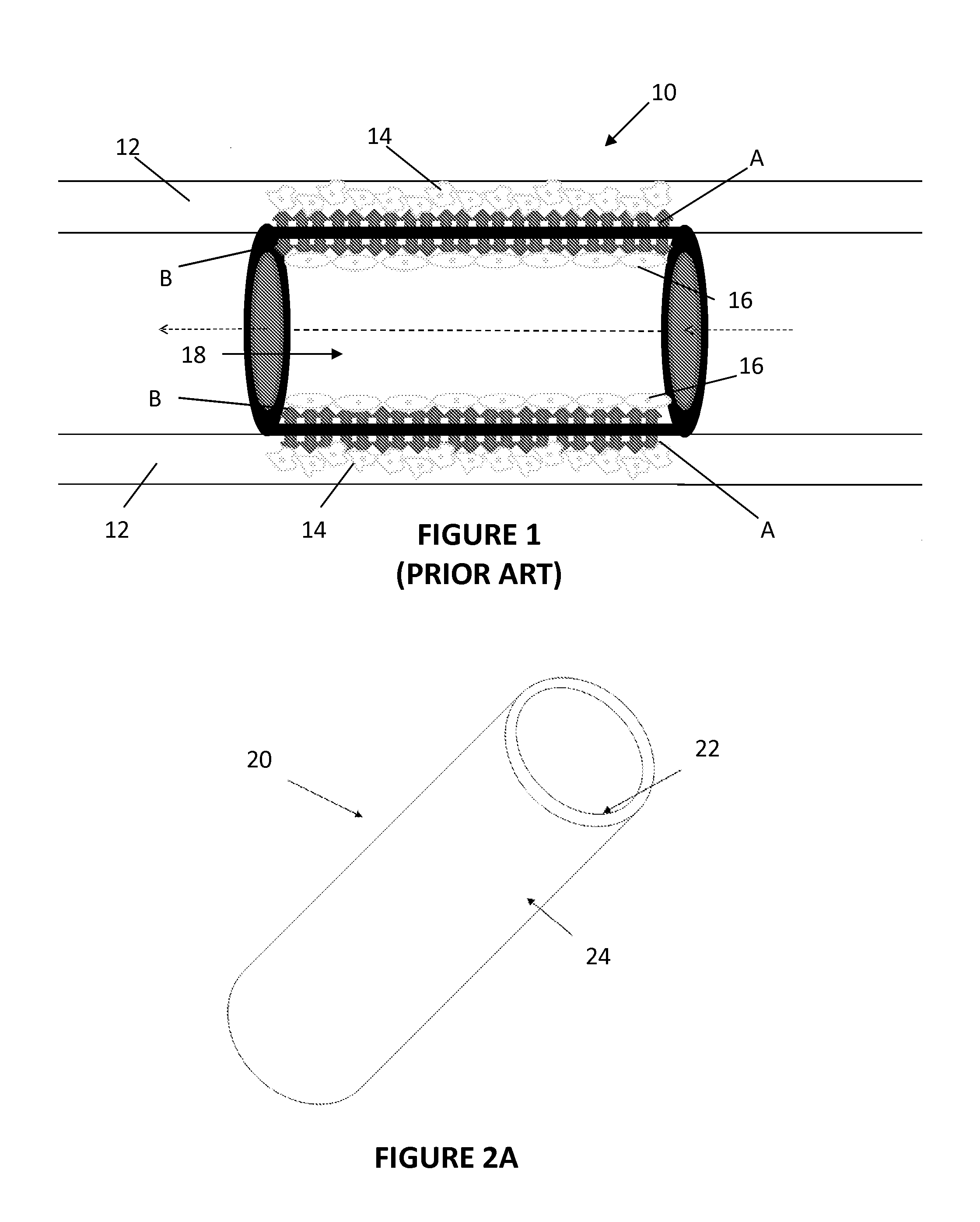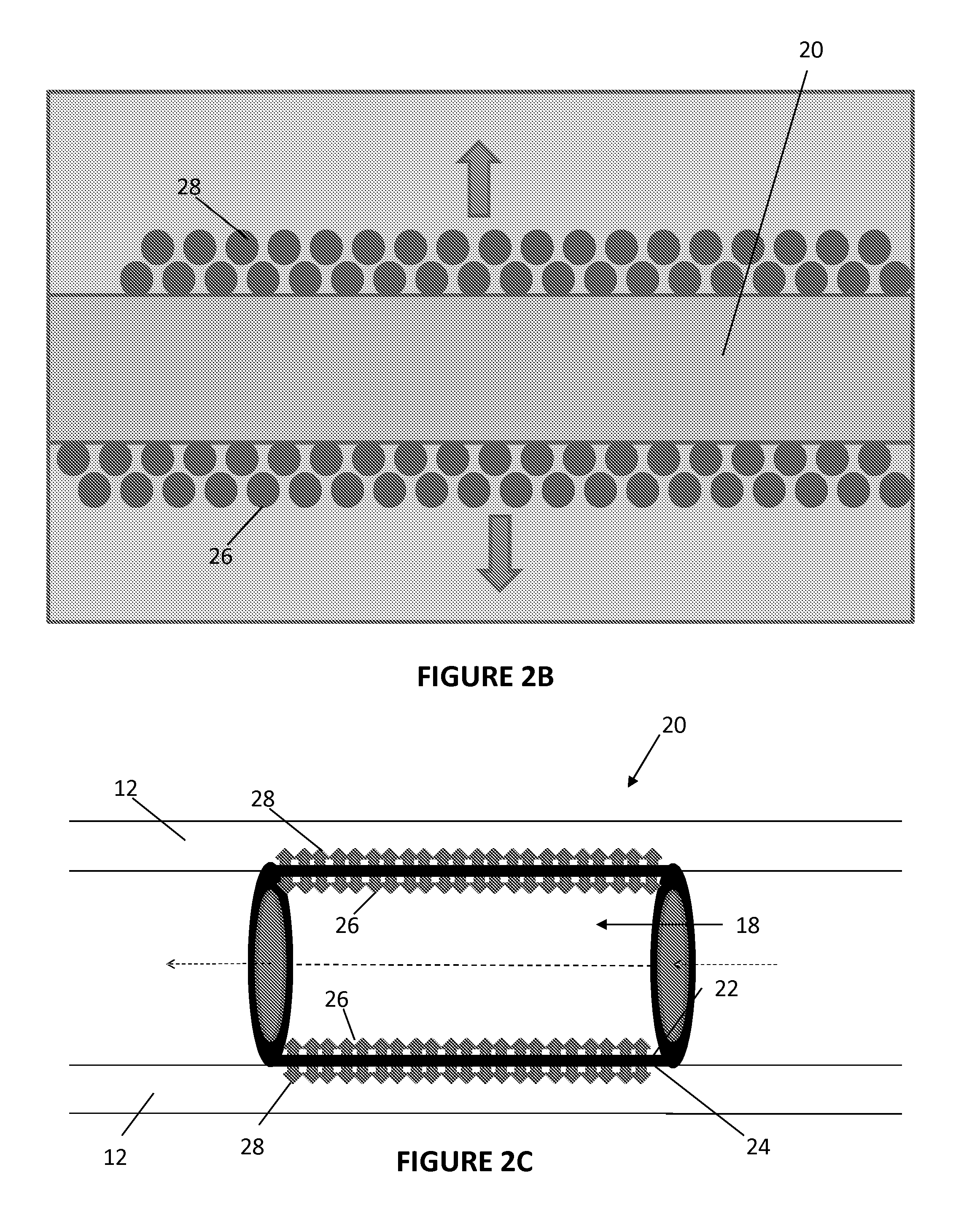Methods, Systems, and Devices Relating to Directional Eluting Implantable Medical Devices
a technology of directional eluting and medical devices, applied in the field of directional eluting implantable medical devices, can solve the problems of restenosis (arterial re-narrowing) after ptca, a major limitation, and a significant problem in the formation of neo-intima (new tissue) in the stent, so as to inhibit the growth of smooth muscle cells and promote the growth of endothelial cells
- Summary
- Abstract
- Description
- Claims
- Application Information
AI Technical Summary
Benefits of technology
Problems solved by technology
Method used
Image
Examples
examples
[0048]A variety of experiments were carried out to demonstrate directional elution of therapeutic agents from an implantable medical device such as a stent.
example one
[0049]In Example 1, Co—Cr alloy stents were immersed in ImM solution of phosphonoacetic acid in de-ionized water (di-H20) for 24 hours followed by heating the stents in air at 120° C. for 18 hours. The stents were then cleaned by sonication in di-H20 for 1 minute and dried using nitrogen gas. Thus prepared phosphonoacetic acid coated stents were characterized using Fourier transform infrared spectroscopy (FTIR).
[0050]FIG. 3A provides the FTIR results. The FTIR spectrum of phosphonoacetic acid coated stents showed peak positions at 932, 1021, 1148, and 1716 cm-1 which were assigned to P—OH, P—O-Metal, P═O, and C═O functionalities on the stents, respectively. The peak for the P—O-Metal at 1021 cm-1 shows that the phosphonoacetic acid is covalently bound to Co—Cr alloy stents. The C═O stretch at 1716 cm-1 shows the presence of —COOH terminal groups on the stent surface. Also, the peaks for P—OH and P═O further confirms the presence of phosphonoacetic acid on stents. Thus, the FTIR conf...
example two
[0051]In Example 2, the abluminal surface of a phosphonoacetic acid-treated stent was coated with paclitaxel. FIGS. 4 and 5 show the abluminal and luminal surfaces, respectively, of the Co—Cr alloy stents prior to coating.
[0052]The phosphonoacetic coated stents were placed on a mandrel in such a way that the luminal surface of the stents was in close touch (tight contact) with the mandrel. A solution of paclitaxel was prepared in 75% ethanol and 25% DMSO. Thus prepared paclitaxel solution was sprayed on the abluminal surfaces of the stent. A tight contact was maintained between the luminal stent surface and the mandrel to prevent any paclitaxel moving into the luminal surface of the stent. In addition, once the spray coating was finished, the stent (coated with paclitaxel on the abluminal surface) was taken out and luminally cleaned to make sure there is no paclitaxel present on the luminal surface of the stent.
[0053]This exclusive luminal surface cleaning was carried out by the fol...
PUM
| Property | Measurement | Unit |
|---|---|---|
| contact angles | aaaaa | aaaaa |
| contact angles | aaaaa | aaaaa |
| contact angle | aaaaa | aaaaa |
Abstract
Description
Claims
Application Information
 Login to View More
Login to View More - R&D
- Intellectual Property
- Life Sciences
- Materials
- Tech Scout
- Unparalleled Data Quality
- Higher Quality Content
- 60% Fewer Hallucinations
Browse by: Latest US Patents, China's latest patents, Technical Efficacy Thesaurus, Application Domain, Technology Topic, Popular Technical Reports.
© 2025 PatSnap. All rights reserved.Legal|Privacy policy|Modern Slavery Act Transparency Statement|Sitemap|About US| Contact US: help@patsnap.com



